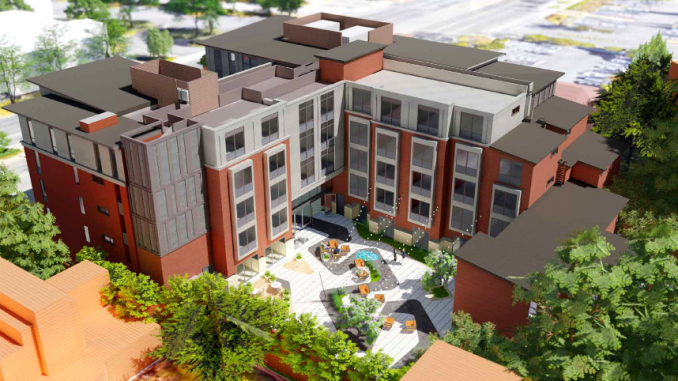
BY ALLISON LEVITSKY
Daily Post Staff Writer
Residents complained yesterday (Jan. 17) that a proposed 100-room hotel in south Palo Alto was too dense for its half-acre lot, but the Architectural Review Board focused on the project’s aesthetics.
The five-story Hotel Caterina is proposed to replace the Su Hong Chinese restaurant at 4256 El Camino Real.
The board voted unanimously to have developer Mircea Voskerician return at a later date, which has not been set.
“We don’t want a big, uniform, monolithic mass,” board Chair Wynne Furth said. “It needs to be beautiful, it needs to be a pleasure to look at, and of course it needs to last.”
This hotel is at the maximum density allowed on the half-acre site.
“In general, you have a massing that’s quite big,” board member Osma Thompson said. “You’re using material to break down the scale, which I think is the right move.”
Board member Peter Baltay said the design needs “more in-house design revisions” to address its choice of materials, which he said seem to have been chosen to cut costs.
Board member David Hirsch said he wants to see a more pedestrian-friendly sidewalk while noting that few pedestrians walk down that part of El Camino.
The hotel would stand 50 feet tall, other than an additional 12-foot mechanical screen to cover the rooftop HVAC equipment, and includes 51,861 square feet.
Voskerician told the Post that he increased the number of rooms from 69 to 100 in order to make it marketable to a large hotel chain.
Neighbors at the Palo Alto Redwoods condominiums next door showed up to air grievances about the proposed hotel.
“We are not against development. But we object to this project because of its massive scale and its inconsistency with the neighborhood,” HOA board member Peter Mills said. “The project is simply too huge. We are not Manhattan.”
Palo Alto Redwoods resident Neil Murphy said the city should put housing on the site, but is incentivized to approve more hotels in order to rake in revenue from the 15.5% hotel tax.
“The city of Palo Alto has become addicted to hotel tax revenue and developed a perverse financial incentive to favor hotels over housing,” Murphy said.
Julie Baskind, a 30-year resident of the Palo Alto Redwoods, questioned the traffic study that counted vehicles on a Saturday in mid-June, seeming to avoid counting traffic during business hours and when K-12 schools and Stanford are in session.
Other residents said they were concerned the hotel would block their sunlight and harm their redwood trees.
Stephanie Tramz, a recent Stanford retiree and 20-year resident of the Palo Alto Redwoods, said the hotel would be “absolutely inconsistent with the neighborhood.”
“These what end up being six stories are going to loom over not only our beautiful development but the entire neighborhood, and going to stick out like some sort of grotesque aberration,” Tramz said. “We already have five hotel properties within a two-block area.”




Of course the City is biased in favor of hotel projects. The city workers are worried about their pensions and retiree healthcare benefits, so they support anything that will enrich the city. The fix is in. These residents are wasting their time.
Of course PA residents will oppose the project. They oppose everything.
What a great place for more homes. When the city council says they want more housing, it’s just hot air. This project is proof.